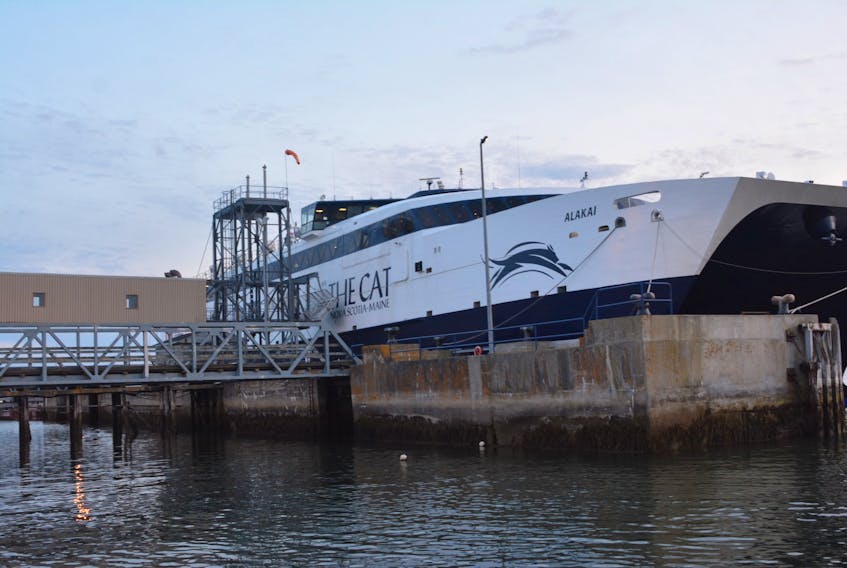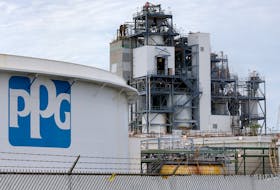YARMOUTH, N.S. – Bay Ferries has been saying a return to Bar Harbor for ferry service between Nova Scotia and Maine is something it is has been exploring. A vote in Bar Harbor this past week will likely cause the company to further look to see if this could be a possibility.
Residents in Bar Harbor voted 1,380 to 213 to have the town purchase the vacant terminal facility from the Department of Transportation for $3.5 million US. A business plan dated June 6 that was prepared for the Town of Bar Harbor speaks to several uses for the terminal, which has been vacant since 2010. The plan points to cruise ship opportunities, recreational and commercial marine uses, turning the facility into a transportation hub and using it as a satellite parking area.
The business plan also speaks to ferry service, stating, “BFL (Bay Ferries Ltd.) has expressed interest in operating a daily service between Bar Harbor and Nova Scotia, beginning as soon as 2019, and has developed a tentative operating plan specific to the ferry property. BFL has expressed both a willingness and a capacity to invest up to $3 million in the ferry property in exchange for access to the Bar Harbor market. BFL is funded in part by the provincial government of Nova Scotia, meaning funding is likely available consistent with the willingness and capacity expressed.”
But the priority is for the facility is for it to be multi-use. The business plan also references goals outlined in a November 2017 report by the Bar Harbor Ferry Terminal Property Advisory Committee that states: "Explore whether Bay Ferries can be compatible with these uses and potentially financially beneficial. Ifthe business plan or Bay Ferries' needs preclude a multi-use marine facility with optional tender boat landings from cruise ships, the committee prioritizes marine uses, including a transportation hub at the property, over Bay Ferries."
WHY WOULD BAY FERRIES EXPLORE A CHANGE?
Asked why Bay Ferries would want to explore Bar Harbor as an option, Mark MacDonald, president and CEO of Bay Ferries, recently told the Tri-County Vanguard the company is always trying to identify the best and most efficient way to undertake the service and so they would explore all options. He says sailing to Portland gives closer proximity to the Boston market, but it is a longer transit than Bar Harbor (186 nautical miles compared to 106) so you have higher fuel consumption and a longer crew day. Aside from a shortened sailing time to Bar Harbor, this port opens up access to a market that sees 3.5 million visitors annually to Acadia National Park.
MacDonald said there is also an issue that will arise in the next few years in Portland that could see the terminal footprint size reduced due to redevelopment happening on the Portland waterfront. That could prove challenging for ferry operations, he said. So they want to see what other options may exist.
On June 7 the province’s Department of Transportation and Infrastructure Renewal told the Tri-County Vanguard the operating subsidy this year for The Cat ferry is expected to be $10.9 million. It’s an increase of $1.5 million, with rising fuel costs accounting for a large portion of the increase. The subsidy doesn’t include $1.5 million spent since last season by the province and Bay Ferries to upgrade the terminal facility in Portland. U.S. Customs and Border Protection said without the upgrades it wouldn’t provide service. Without their service there could be no ferry operation. The equipment belongs to the province and is portable.
The vote by residents does not mean ferry service is returning to Bar Harbor.
The business plan presented to the Town of Bar Harbor says not to interfere with other uses for the terminal facility as proposed by the advisory committee, Bay Ferries has proposed in the past having a “slow turnaround” plan of approximately three hours at the terminal for getting passengers on and off the ferry.
That differs from the quicker turnaround when the ship arrives in Portland and starts loading new passengers and vehicles for departure as soon as vehicles and passengers arriving in Portland have disembarked. The business plan reads: “Eliminating simultaneous embarkation and disembarkation and the passenger and vehicle queuing that go with it, a “slow turnaround” would substantially reduce the physical area required to support international ferry service, thereby freeing up significant square footage at the ferry property for other uses.”
The business plan says if ferry service was ever to be a consideration, Bay Ferries understands that no upfront costs associated directly with their operations at the Bar Harbor Ferry Property would be borne by the Town, and they fully expect all initial capital investments related directly to BFL’s operations to be made directly by either BFL or the government of the Province of Nova Scotia prior to initiation of ferry operations at the site.
OTHER RECENT FERRY SERVICE STORIES:
JUNE 7, 2018: CAT FERRY SERVICE STARTS JUNE 8
JUNE 15, 2018: YARMOUTH MUNICIPAL UNITS TO APPLY FOR UPGRADES TO YARMOUTH FERRY TERMINAL
BAR HARBOR'S FERRY HISTORY
Bar Harbor has a long history as an international ferry terminal dating back to the mid-1950s when the first MV Bluenose started sailing between Bar Harbor and Yarmouth. Bay Ferries operated the Bluenose for one sailing season to and from Bar Harbor in 1997 after taking over the route from Marine Atlantic and introduced the first Cat high-speed ferry to the Bar Harbor-Yarmouth route in 1998.
In 2006 The Cat started sailing to both Bar Harbor and Portland after Scotia Prince Cruises announced in 2005 it wasn’t going to be sailing anymore. In its last season in 2004 the Scotia Prince had transported over 100,000 passengers but the company cited terminal issues in Portland as a main reason why it was ending its service.
The Cat stopped operating completely after the 2009 season when the then N.S. NDP government cancelled the operating subsidy for The Cat. At the time Bay Ferries said it was seeking a subsidy in the $6-to-$7 million range.
When ferry service resumed in 2014, first by Nova Star Cruises and then by Bay Ferries, Portland was the chosen port. After two years of ferry operation by Nova Star Cruises (which received around $41.5 million for start-up costs and operational subsidies, and still couldn't pay all of its bills) the province sought out a new operator, giving the nod to Bay Ferries. The province provided Bay Ferries with $32.7 million in its first two years. This figure included $13.1 million towards start-up costs, which included securing a vessel.
In the past four years around 187,230 people have traveled on the ferry service between Nova Scotia and Maine. Engine issues last year led to a cancellation of about 25 per cent of The Cat’s crossings, which the company called disappointing.









